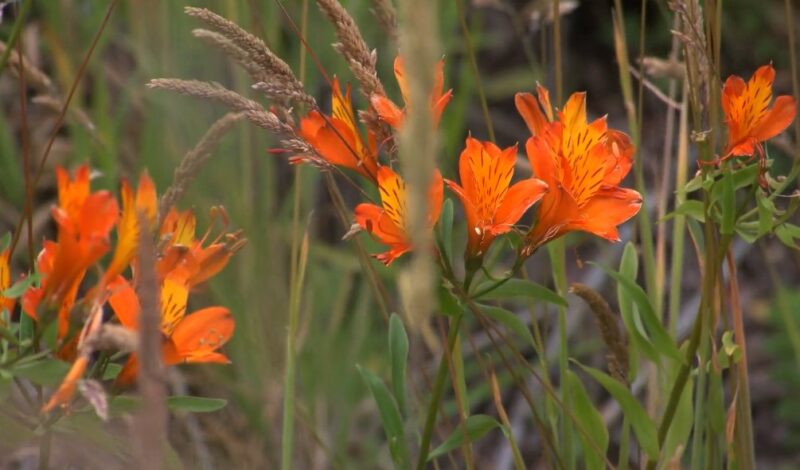There’s something uniquely captivating about Alstroemeria, or as some like to call it, the Peruvian Lily. These vibrant, long-lasting flowers can brighten up any garden or bouquet with their bursts of color and exotic appearance.
While many people may recognize them from floral arrangements, Alstroemerias are just as stunning when grown in your garden or in containers.
Luckily, they’re not too hard to care for with the right guidance. Let me walk you through everything you need to know to plant, grow, and care for these stunning flowers.
What Makes Alstroemeria Special?
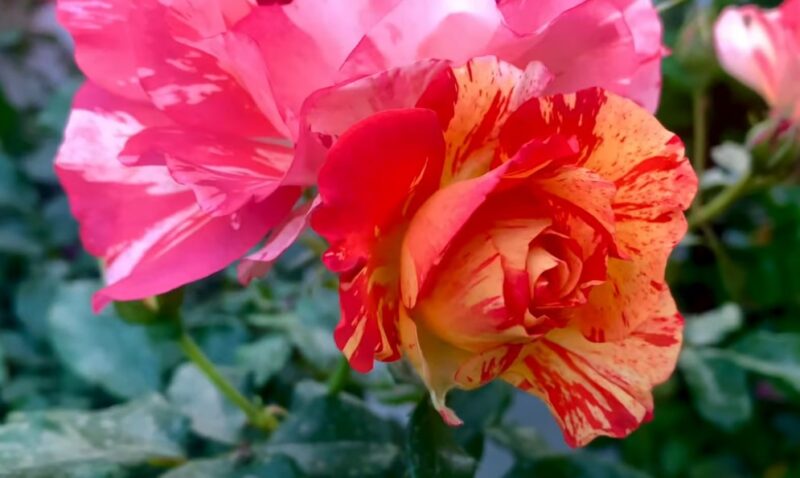
Alstroemeria is a tuberous perennial native to South America, particularly Chile and Brazil. The flowers bear a strong resemblance to lilies, with their delicate, trumpet-shaped blooms and speckled petals.
What’s more, they come in a rainbow of colors, from soft pastels to bold, striking hues of pink, orange, yellow, red, and purple. That’s one of the reasons why they’re so beloved by gardeners and florists alike.
On average, these plants grow between one and three feet tall, depending on the variety. And despite their exotic look, they aren’t as challenging to grow as one might think. With a bit of care and attention, Alstroemerias can thrive in your garden for years.
Creating the Perfect Growing Environment
Light Requirements
Alstroemerias love sunlight but appreciate a bit of shade too, especially if you live somewhere with scorching summers.
In such cases, the morning sun and a touch of afternoon shade will keep them happy. If your garden gets moderate sun, you’re golden.
Soil Requirements
Good soil is everything for Alstroemerias. They need well-draining soil to prevent the roots from rotting, but it can’t be too dry either.
Adding some compost or organic matter into your soil will help with drainage and add the nutrients these flowers need.
Aim for soil that’s slightly acidic to neutral, with a pH around 6.0 to 7.0. They’re not too fussy, but keeping the soil fertile is always a plus.
Planting Alstroemerias
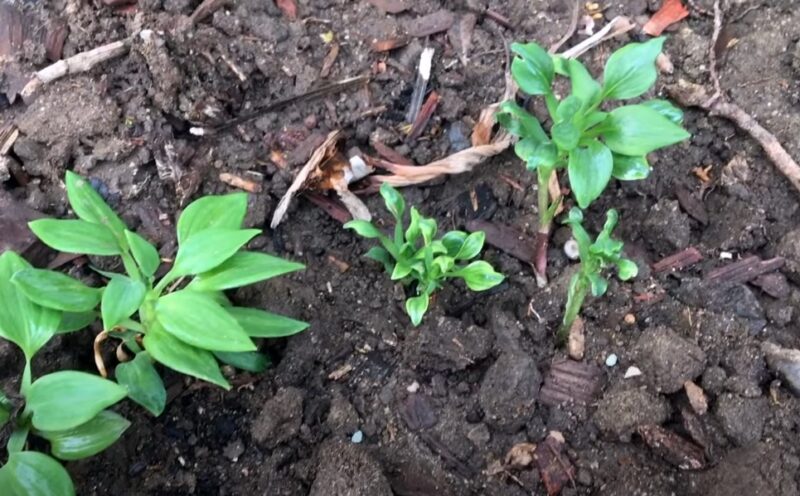
When and Where to Plant
If you’re thinking about planting Alstroemerias, timing is key. The best time to plant them is in the spring after the frost is behind you, although some people in milder climates plant them in the fall.
It doesn’t matter if you’re planting in the ground or a pot, prepare your space with rich soil and enough room for the roots to spread.
How to Plant in the Ground
Here’s a quick guide for planting Alstroemerias in the ground:
- Dig deep: Go about 6-8 inches down.
- Mix in compost or fertilizer: This helps give the plants a head start.
- Position your plants: Place them with the crown at soil level.
- Space them out: Leave 12-24 inches between plants to avoid overcrowding.
- Water thoroughly: This helps settle the soil around the roots.
How to Plant in Containers
Alstroemerias do great in pots, especially if you don’t have much garden space. Pick a container that’s at least 12 inches deep to accommodate the roots.
Use a good-quality potting mix with compost and make sure your pot has proper drainage. When watering, keep in mind that container plants will need more frequent watering than those in the ground, especially in warmer weather.
Watering and Feeding
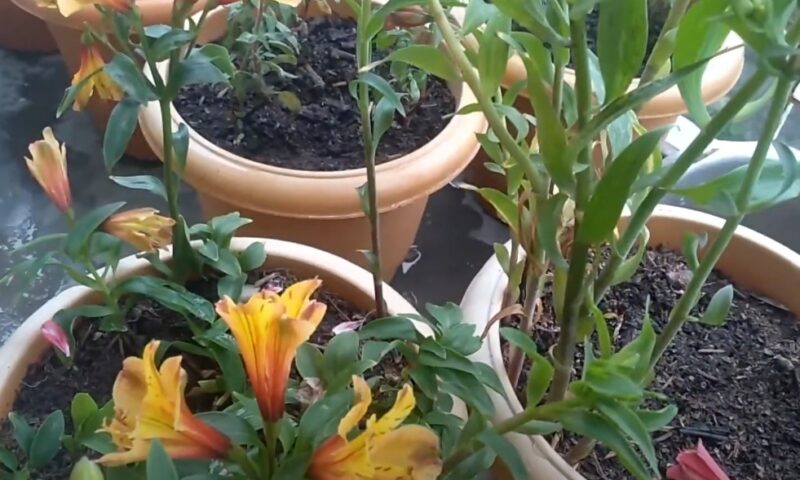
Watering
Alstroemerias like consistent moisture but won’t tolerate soggy soil. It’s a balance. Water deeply, about one inch per week, allowing the water to reach the root zone.
In hotter climates, you may need to water more often. The key is keeping the soil moist, not drenched.
Fertilizing
Feeding your Alstroemerias is crucial for getting those vibrant blooms. Start with a balanced slow-release fertilizer when you first plant them.
Then, as soon as they start blooming, switch to a high-potash fertilizer (like tomato feed) every two weeks. This will encourage more flowers to bloom and keep them going strong throughout the season.
Keeping Your Alstroemerias Looking Their Best
@floriansbotanical Alstroemeria obsession 🫶🏼. Easy to grow, comes back every year, beautiful colours, perfect cut flower … what’s not to love? 💚 I don’t think they get enough kudos! What do you think? #alstroemeria #flowergrower #englishgarden #grownotflown #britishflowers #britishcutflowers #cutflowergarden #gardener #hartleywintney #hampshiregardener #walledgarden #growyourown ♬ original sound – Michelle
Mulching
Mulching can be a game-changer for your Alstroemerias. By laying down a layer of organic mulch (like straw or bark chips) around the base, you’ll help retain moisture, keep the soil cool, and prevent weeds from stealing nutrients. Plus, the mulch will protect the roots during hotter days.
Deadheading and Pruning
Regular deadheading will encourage more blooms. The trick with Alstroemerias is to pull, not cut, the entire flower stem from the base. This method stimulates new growth and keeps the plant blooming for longer.
Additionally, trim any dead or damaged stems throughout the season to maintain the plant’s health. Light pruning can also improve air circulation, which helps fend off diseases.
Watch Out for Pests and Diseases
While Alstroemerias are pretty resilient, they can occasionally attract aphids, slugs, or snails. Aphids can usually be managed with a bit of insecticidal soap or by encouraging natural predators like ladybugs.
As for slugs and snails, handpicking or using organic slug bait works well. Keep an eye on your plants, but for the most part, they’re pest-free.
Root rot is another potential issue, especially if the soil stays too wet. The best way to avoid this is by ensuring your soil drains well and being mindful not to overwater.
Propagating Alstroemerias
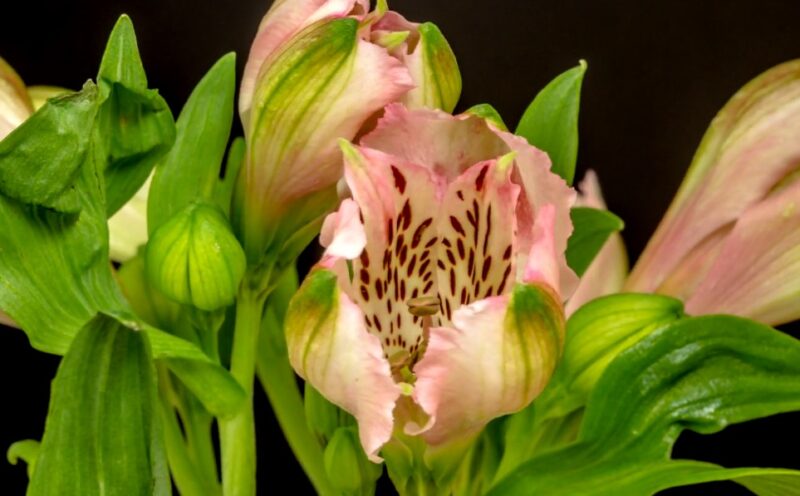
Division
One of the simplest ways to propagate Alstroemerias is by dividing the clumps in the fall or early spring. Carefully dig up the tubers, being gentle with the roots, and separate the clumps into smaller sections.
Each section should have at least one healthy shoot and a piece of the root system. Once divided, replant them in prepared soil or containers.
Growing from Seeds
Growing Alstroemerias from seeds is possible, but be prepared to wait a bit longer for flowers. It can take a few years before you see blooms.
If you’re patient, sow the seeds in a light, well-draining soil mix. Keep the soil moist and warm, and once the seedlings are big enough, you can transplant them.
Caring for Alstroemerias in Winter
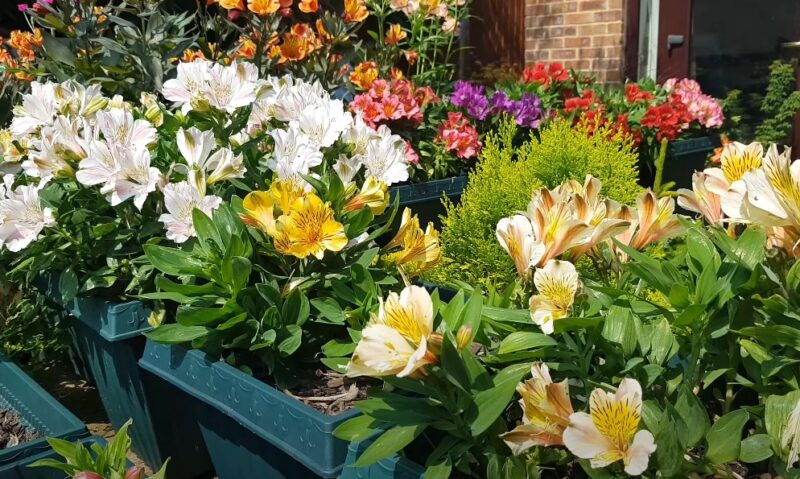
In warmer regions, Alstroemerias can stay in the ground year-round. A good layer of mulch will help protect the tubers from frost. However, if you’re in a colder climate, it’s best to dig up the tubers after the first frost and store them indoors.
A cool, dry place, like a basement or garage, works well. Store the tubers in a box filled with peat moss or sand to keep them from drying out until spring rolls around again.
Final Thoughts
Alstroemerias are stunning plants that reward you with months of beautiful blooms. They’re relatively easy to care for as long as you give them the right conditions—plenty of sun, good soil, and regular watering.
Their ability to thrive in containers or in the ground makes them a versatile choice for any garden. Whether you’re new to gardening or a seasoned pro, adding Alstroemerias to your space will surely bring color and vibrancy to your outdoor (or indoor) haven.

